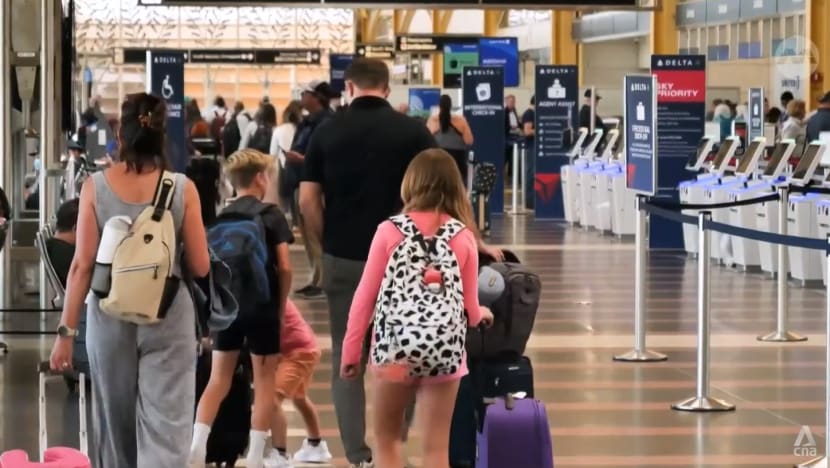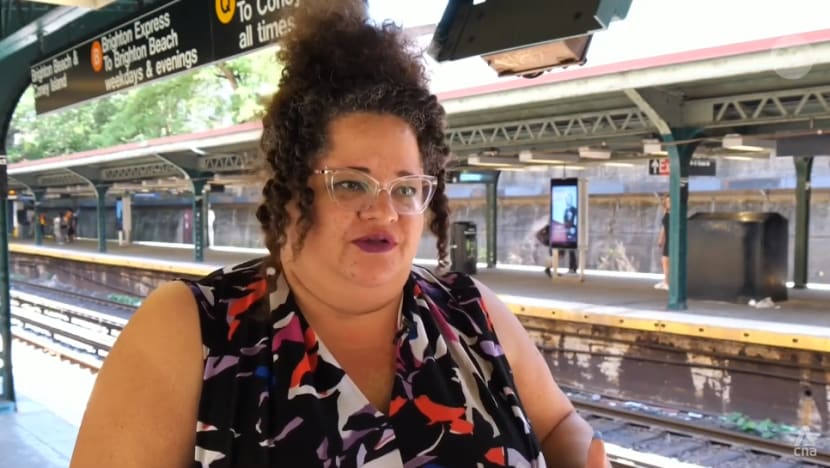US, Europe grapple with providing accessibility to visitors with disabilities
Plus-sized people are also calling for increased accessibility.

As holiday season in the United States and Europe ramp up, travellers with accessibility issues may get left behind.
Border restrictions may no longer be a hindrance for travellers post-pandemic, but other challenges still plague people with disabilities.
As the peak travel season ramps up and holiday-makers in the United States and Europe jet off on vacation, people with access needs are limited in where they can go.
Americans with mobility disabilities spend US$58.2 billion a year on travel. However, 96 per cent said they faced problems with accommodation, while 86 per cent experienced issues with flights, according to a survey of more than 2,000 people conducted by research firm MMGY Travel Intelligence.
Without accessible flights and airports, many people with access needs are grounded.
Data from the US Department of Transport showed that as the number of passengers has risen, there has been a higher proportion of complaints from flyers with disabilities.
Officials from the Port Authority of New York and New Jersey, which oversees transport infrastructure in the region, said they are going above and beyond their legal obligations.
"I would love to see everybody have the ability to travel, and travel comfortably, in a way that they are able to be as independent as they want to be but receive the services that they need to be able to successfully make a trip," said New Jersey Airports general manager Sarah McKeon.
Advocates, however, said real change in the tourism industry starts in the sky.
Airlines in the US are responsible for losing or damaging thousands of wheelchairs and mobility scooters every year, leaving those who rely on them stranded or at risk of serious injury.
New legislation proposed earlier this year aims to change that.
SIMILAR CHALLENGES IN EUROPE
In Europe, where the summer holidays are approaching and millions typically travel to the coasts and countryside, similar problems persist.
Many popular destinations struggle to accommodate people with disabilities, though some tourist sites are making progress in improving accessibility.
In July and August, the waters of Paris’s River Seine are busy with pleasure cruises. Visitors can get on and off the boats at regular stops.
But tourists with disabilities cannot use every quay and are forced to disembark at one of the few pontoons that are accessible via ramps.
Mr Alain Thevenet, commercial director of Batobus, which operates the tours, said that discussions are happening with the city’s council and the Port of Paris to try and increase accessibility.
“They are just conversations for now. The monuments are old, the riverbanks are not all adapted, and it’s not an easy job to create this and bring it up to standard,” he said.
The city’s subway system is notorious for its numerous staircases, with escalators few and far between. The layout is problematic for someone with reduced mobility to navigate.
Change is abound with the newest subway line offering step-free access and future lines being equipped with lifts to the platform.
However, the Paris metro authority said just 32 stations out of more than 300 will be accessible by next year when the 2024 Olympic and Paralympic Games are held in Paris.
Improvements in Italy have moved somewhat faster, with popular tourist attraction, the Colosseum in Rome, installing a new lift.
"At the moment, even the underground sections are accessible, because we introduced in 2021 … a walkway that allows disabled people to get a view of them. This is another element that’s part of the bigger project dedicated to accessibility,a Colosseum for everyone,” said director of the Colosseum’s Archeological Park, Ms Alfonsina Russo.
PLUS-SIZE TRAVELLERS CALL FOR CHANGES
Another sidelined group calling for changes in the travel industry are the plus-sized.
They face discrimination and extra charges, with some airlines requiring them to buy two seats or upgrade to a different class or deny them access to flights altogether, they said. They also struggle with inaccessible transport options on the ground.
Plus-size campaigners said journeys in New York City can be slow, painful and frustrating.
They are calling for an uplift in infrastructure to accommodate travellers of all sizes, saying efforts to improve accessibility do not always take their needs into account.
"Often, seating that is said to be accessible is because they have a space to park a wheelchair. I’m not coming with a wheelchair so where am I going to sit?" asked Ms Tigress Osborn, chair of the National Association to Advance Fat Acceptance.
New York’s City’s transportation authority, the MTA, said that by 2055, 95 per cent of subway stations will have a ramp or an elevator. But modernising travel networks takes time, and substantial financial backing.
Ms Lisa Daglian, executive director of the Permanent Citizens Advisory Committee of the MTA, said that there is a difference when building something from scratch compared to when starting from something that is over 100 years old.
"You're trying to cobble it together to accommodate as many people as possible. Understanding that needs have changed, people have changed, the way we travel has changed," she said.

The average American is more than 14kg heavier than in 1960, according to the National Center for Health Statistics.
Lack of accessible features can make flights a challenge as well, and Ms Osborn lamented the attitude of fellow flyers.
"People are not always friendly about sharing space. I think that’s especially true in an airline setting because people have paid so much for their tickets often that they’re very territorial about their space," she said.
"So, you are uncomfortable as a larger passenger, they are uncomfortable, but they are not uncomfortable letting you know that they are uncomfortable. And rather than blaming the airline or the bus, or the van or whatever piece of transport you are in, for not having enough space, they just blame you for having a larger body."
But new legislation is opening up a new chapter in New York’s history, making it illegal to discriminate based on a person’s weight.
The law applies to employment, housing, hospitals, restaurants and stores.
Advocates hope the legislation and more education will help dispel some of the prejudice.
Additional reporting by Kate Fisher

















